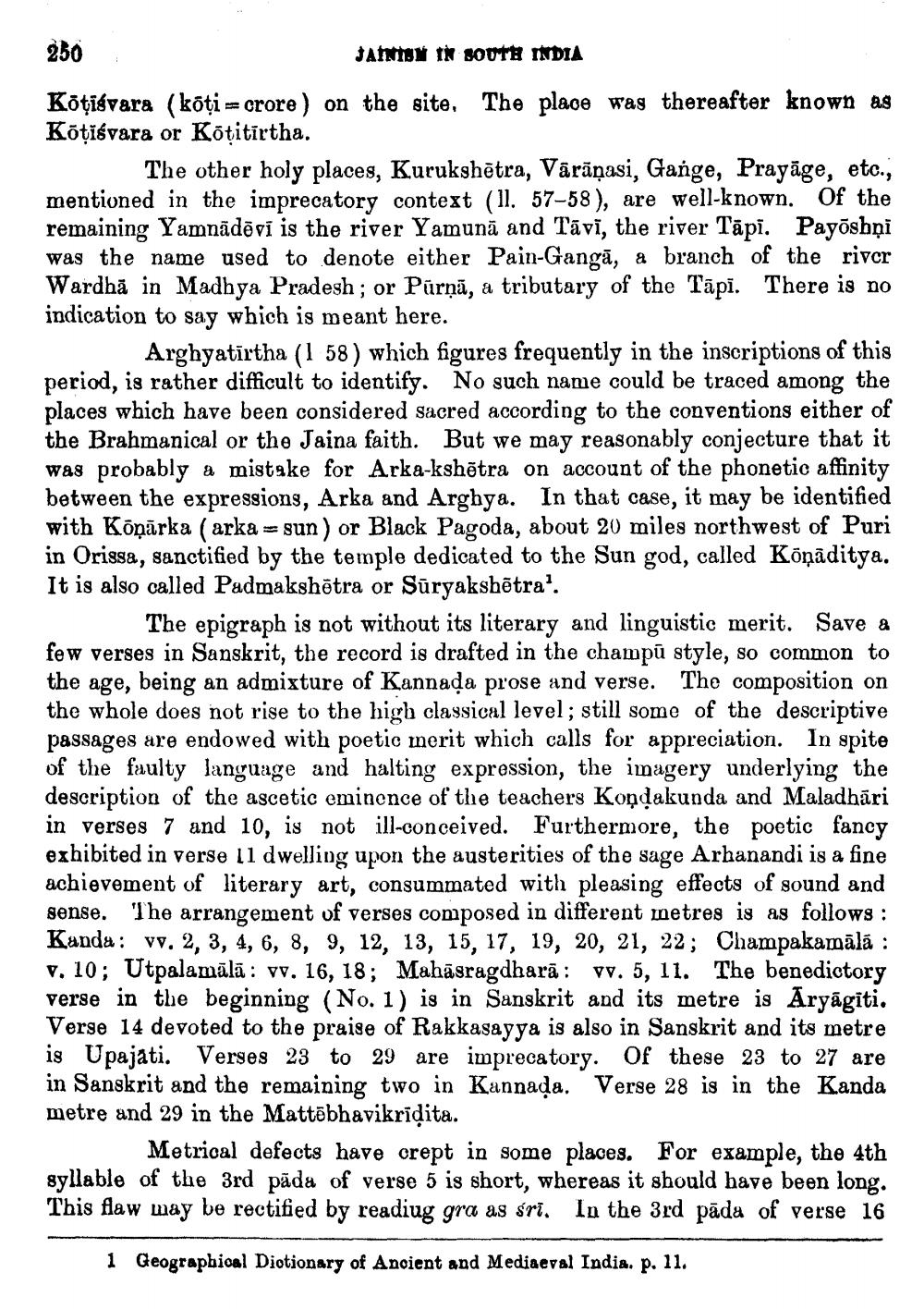________________
250
JAINISM IN SOUTH INDIA
Kōṭisvara (kōti-crore) on the site. The place was thereafter known as Kōṭisvara or Kōṭitirtha.
The other holy places, Kurukshetra, Vārāṇasi, Gange, Prayage, etc., mentioned in the imprecatory context (11. 57-58), are well-known. Of the remaining Yamnādēvi is the river Yamuna and Tavi, the river Tapī. Payōshņi was the name used to denote either Pain-Ganga, a branch of the river Wardha in Madhya Pradesh; or Pūrṇā, a tributary of the Tapi. There is no indication to say which is meant here.
Arghyatirtha (1 58) which figures frequently in the inscriptions of this period, is rather difficult to identify. No such name could be traced among the places which have been considered sacred according to the conventions either of the Brahmanical or the Jaina faith. But we may reasonably conjecture that it was probably a mistake for Arka-kshetra on account of the phonetic affinity between the expressions, Arka and Arghya. In that case, it may be identified with Kōpārka (arka = sun) or Black Pagoda, about 20 miles northwest of Puri in Orissa, sanctified by the temple dedicated to the Sun god, called Kōņāditya. It is also called Padmakshetra or Suryakshetra1.
The epigraph is not without its literary and linguistic merit. Save a few verses in Sanskrit, the record is drafted in the champū style, so common to the age, being an admixture of Kannada prose and verse. The composition on the whole does not rise to the high classical level; still some of the descriptive passages are endowed with poetic merit which calls for appreciation. In spite of the faulty language and halting expression, the imagery underlying the description of the ascetic eminence of the teachers Kondakunda and Maladhāri in verses 7 and 10, is not ill-conceived. Furthermore, the poetic fancy exhibited in verse 11 dwelling upon the austerities of the sage Arhanandi is a fine achievement of literary art, consummated with pleasing effects of sound and sense. The arrangement of verses composed in different metres is as follows: Kanda: vv. 2, 3, 4, 6, 8, 9, 12, 13, 15, 17, 19, 20, 21, 22; Champakamālā : v. 10; Utpalamālā: vv. 16, 18; Mahasragdhara: vv. 5, 11. The benedictory verse in the beginning (No. 1) is in Sanskrit and its metre is Aryagīti. Verse 14 devoted to the praise of Rakkasayya is also in Sanskrit and its metre is Upajati. Verses 23 to 29 are imprecatory. Of these 23 to 27 are in Sanskrit and the remaining two in Kannada. Verse 28 is in the Kanda metre and 29 in the Mattebhavikrīḍita.
Metrical defects have crept in some places. For example, the 4th syllable of the 3rd pada of verse 5 is short, whereas it should have been long. This flaw may be rectified by reading gra as śrī. In the 3rd pada of verse 16
1 Geographical Dictionary of Ancient and Mediaeval India. p. 11.




